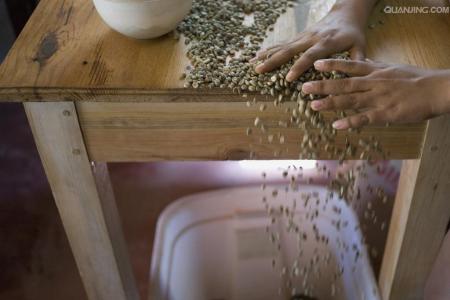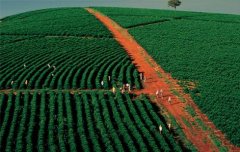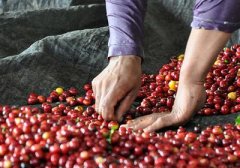A brief introduction to the history and culture of the origin and development of high-quality coffee and beans

About the way to deal with it: W2, H2, N2.
W2, H2, N2: it can be understood as the traditional way of processing raw beans, and 90 + also regards them as the distinction of taste.
Ninety Plus thought that coffee itself is a kind of fruit, so he made his own exclusive treatment according to taste (W2), (H2), and (N2). When you understand traditional coffee processing, you will find that a small amount of adjustment can blur the distinction between them. For example, a little washing can be added at different stages of the densification process to achieve a lighter and brighter washing taste; controlling the degree of pulp fermentation can also make a sun closer to the effect of a dense treatment, or dense treatment can be more like a solarization.
According to the degree of effect of fruit flavor on taste, it can be divided into: W _ 2 ~ H _ 2 ~ 2 ~ 2. The distinction between these three flavors can also be simply understood as treatment methods: W2=WASH washing treatment, H2=Honey honey treatment, N2=NATURE sun treatment:
W2: lower (Low) fruit tonality; emphasizes brightness, acidity, and floral aroma.
H2: warm (Moderate) fruit tonality; emphasizes sweetness, fruit taste (rather than fruit flavor), and tea taste.
N2: higher (High) fruit tonality; emphasizes unrestrained, sweet and sour, jam and dried fruit flavors.
In 2007, the founder and current CEO, Joseph Brodsky, personally went to Ethiopia, the native place of coffee, to look for wild varieties of coffee trees and tried different ways of treatment, and finally let coffee speak in its own voice, which was heard by the whole world, full of fruit aroma and rich connotation, shocking. Not enough, Joseph is actively buying a 134-hectare coffee plantation in Panama and planting 80, 000 gesha trees, which have been hailed as the best coffee variety in recent years.
The founder and current CEO, Joseph Brodsky, personally went to Ethiopia, the native place of coffee, to look for wild varieties of coffee trees, tried different ways of handling it, and finally let the coffee speak in its own voice, so that the whole world heard this kind of sincere whisper full of fruit aroma and rich connotation.
This is not enough, he is also actively buying a 135-hectare coffee plantation in Panama, planting 80, 000 GESHA trees, which have been regarded as the best coffee variety in recent years, making it the largest Gesha plantation in Panama. Some of the collected samples have been published, and by 2014, they have reached economic scale and have officially become regular products.
Hachira N2 L12
Hachira N2 L12
Hachira N2 L12
Originated in 90 + 2006-2008 with S.A.Bagersh development of Aricha (Achilla) production series. Name this coffee "Hachira". Hachira coffee juice has a distinctive floral flavor, usually with elderberry or BlackBerry flavors, and sometimes with basil herbs.
Producing area 90 + Ethiopia, Achira (Achilla) producing area.
1750-2000m above sea level
Treatment mode of solarization
The flavor is full of floral smell and obvious sense of fruit juice. it has the flavor of elderberry, BlackBerry and basil herbs, as well as lactose.
CoffeeReview score: 94
Year: 2012 Baker: Thirty Thirty Coffee Co.
Link: http://www.coffeereview.com/review.cfm?ID=2928
Hachira N2 L12
Inspired by the Ninety Plus Aricha selections developed with S.A. Bagersh from 2006-2008, Hachira coffees are juicy and floral, commonly with concentrated elderberry to blackberry fruit, sometimes with basil-like herbal notes.
Origin: Ninety Plus Ethiopia: Achira region
Elevation: 1750-2000m
Processing: Natural
Flavor Profile: Juicy, elderberry, blackberry, toffee, herbal, floral. Complex, original, deeply sweet-toned. Symphonic fruit notes suggest melon, cidery pear, mint, apricot, even banana. Smoothly rich acidity; full, buoyantly lively mouthfeel. Fruit consolidates toward chocolate in a simplifying but resonant finish.
Important Notice :
前街咖啡 FrontStreet Coffee has moved to new addredd:
FrontStreet Coffee Address: 315,Donghua East Road,GuangZhou
Tel:020 38364473
- Prev

A brief introduction to the description of the flavor and aroma characteristics of fine coffee beans
According to the degree of effect of fruit flavor on taste, it can be divided into: W _ 2 ~ H _ 2 ~ 2 ~ 2. The distinction between these three flavors can also be simply understood as treatment methods: W2=WASH washing treatment; H2=Honey honey treatment; N2=NATURE sun treatment: W2: lower (Low) fruit tonality; emphasis on brightness, acidity, and floral aroma. H2: relatively warm (Moderat
- Next

A brief introduction to the market price of soft and low boutique 990 + boutique coffee beans
Link: http://www.coffeereview.com/review.cfm?ID=2928 Hachira N2 L12 Inspired by the Ninety Plus Aricha selections developed with S.A. Bagersh from 2006-2008, Hachira coffees are juicy and floral, commonly with concentrated elderberry to bla
Related
- Detailed explanation of Jadeite planting Land in Panamanian Jadeite Manor introduction to the grading system of Jadeite competitive bidding, Red bid, Green bid and Rose Summer
- Story of Coffee planting in Brenka region of Costa Rica Stonehenge Manor anaerobic heavy honey treatment of flavor mouth
- What's on the barrel of Blue Mountain Coffee beans?
- Can American coffee also pull flowers? How to use hot American style to pull out a good-looking pattern?
- Can you make a cold extract with coffee beans? What is the right proportion for cold-extracted coffee formula?
- Indonesian PWN Gold Mandrine Coffee Origin Features Flavor How to Chong? Mandolin coffee is American.
- A brief introduction to the flavor characteristics of Brazilian yellow bourbon coffee beans
- What is the effect of different water quality on the flavor of cold-extracted coffee? What kind of water is best for brewing coffee?
- Why do you think of Rose Summer whenever you mention Panamanian coffee?
- Introduction to the characteristics of authentic blue mountain coffee bean producing areas? What is the CIB Coffee Authority in Jamaica?

